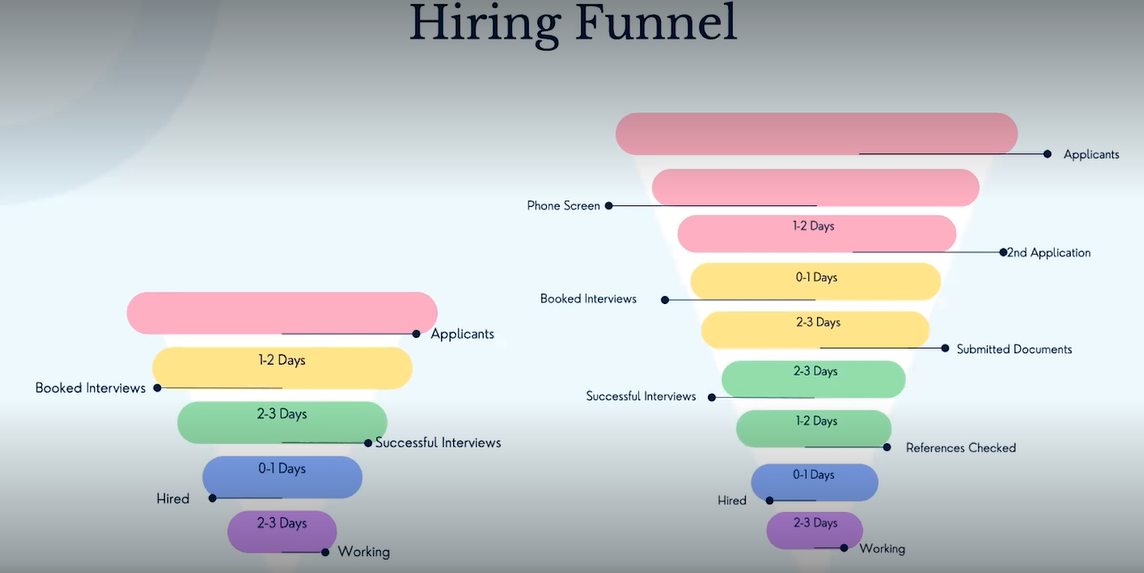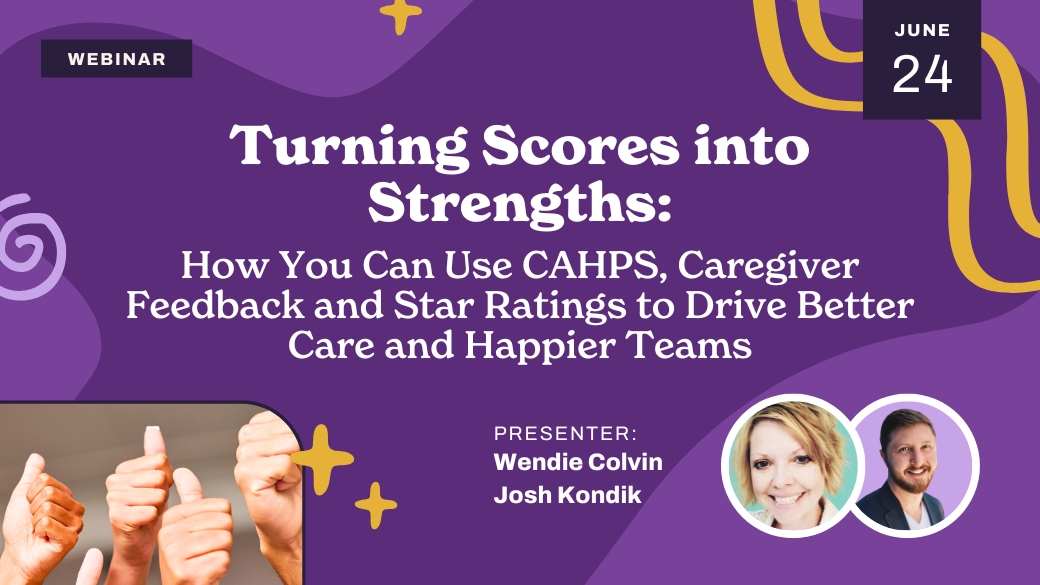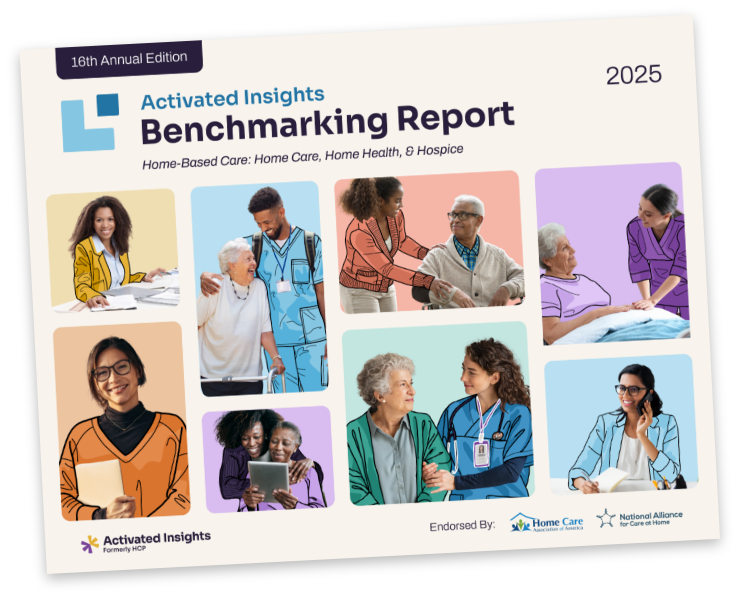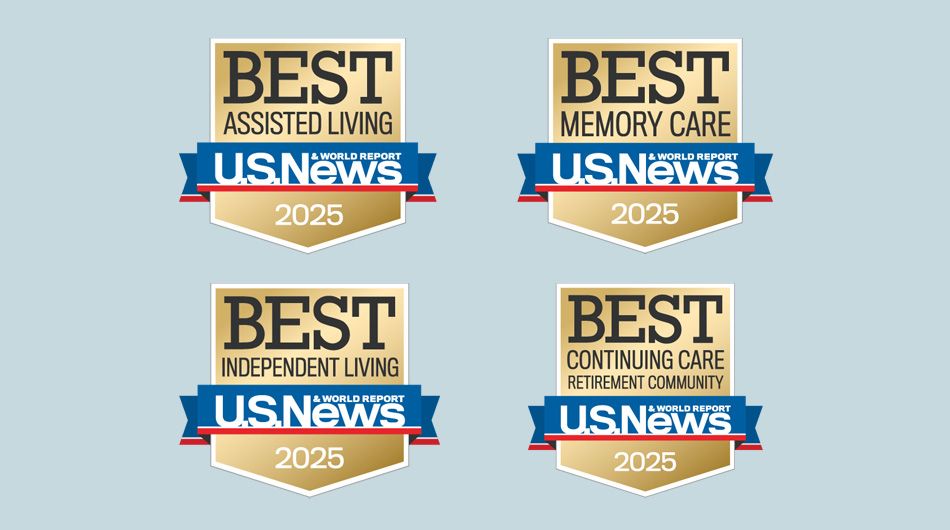With a 65% industry-wide caregiver turnover rate for 3 consecutive years in a row, home care agencies are getting stuck in a downward recruitment spiral. Streamline your hiring funnel by tracking these often-overlooked metrics to begin recruiting for success without it costing you another cent.
You’re understaffed, so you have to turn away client cases.
This produces lower revenue and profit, which means you can no longer afford to invest more into your ad budget or recruiting pipeline.
As a result, you can’t attract enough hires to your agency, and the cycle repeats itself.
Sound familiar?
If you’ve ever found yourself stuck in this never-ending downward recruitment spiral, the answer to your problems isn’t to invest more money into your recruitment pipeline—it’s data.
During the 2022 Home Care Growth Summit, National Home Care Hiring Expert and Founder/CEO of Carework, Rachel Gartner, explained that, while you can’t outspend a broken recruiting pipeline, you can streamline your entire hiring process with the right strategy.
After processing over 50,000 home care applications with her team, Gartner has a proven process to streamline the hiring funnel and increase recruitment success. You can improve your own hiring process by tracking these 5 underrated metrics:
Check out more videos like this one on Home Care TV.
Ratio of Applicants to Booked Interviews
Why It’s Important
Tracking how many applicants reach their first interview will help you measure the quality of applicants that your hiring funnel is attracting. To find your applicant to interview ratio, divide your total number of applicants by the number of applicants who completed their first interview.
According to the Activated Insights Benchmarking Report, Indeed was the top recruitment source for home care providers.
But while it may bring in the most applicants, it also has the highest acquisition cost and produces the highest turnover rate of 85%—which is 20% more than the industry average caregiver turnover.
If this trend continues, the overall caregiver turnover rate will increase.
Why is this happening?
While many providers rely solely on the recruitment data that job sites directly track, such as the number of applicants acquired on their platform, the real information lies in the indirect data that job boards don’t report.
How to Improve It
If you want to increase the number of applicants who turn into booked interviews, tweak your application process to attract interview-level candidates who will become long-term hires:
Total Time it Takes to Hire
Why It’s Important
This is how agency owners lose the majority of applicants. For every step you add to your hiring funnel, you lose potential hires. The average home care agency’s hiring funnel resembles the diagram on the right and takes approximately 16 days from start to finish.

However, according to Gartner, the ideal hiring funnel should instead resemble the diagram on the left. If you remove the unnecessary recruiting roadblocks, the entire hiring process should only take a maximum of 9 days.
How to Improve It
It’s easy to assume that the best candidates are those willing to take as many steps as needed to be hired. But your potential hire’s ability to wait for you during your hiring process shouldn’t be the determining factor whether they deserve a job offer.
Gartner explains that job seekers looking for the path of least resistance in today’s job market isn’t a red flag:
“There’s an old-school hiring mindset where employers assume if candidates aren’t willing to do this or that, then they wouldn’t have been a good hire anyway. I’m trying to break down that mindset, because it’s really not true. They are not competing for a job; they can go anywhere and get hired. A lot of caregivers are in really precarious financial situations, so when they are looking for a job, they need to know, how quickly am I going to get paid and am I going to get paid enough to provide for my family?”
Streamline the interview portion of your pipeline by recruiting with a caregiver-first mindset. The smoother and easier you can make your hiring process, the more recruits you’ll have to work with who appreciate efficient communication from their employer.
Easily cut down on the unnecessary steps in your hiring funnel:
Stephen Tweed, Founder and CEO at Home Care CEO Forum, shared his secret recruiting weapon to hiring with caregivers’ needs in mind during the Growth Summit. He asks every new caregiver how much money they need to make each week, then does the math to show new hires the number of hours they will need to work each week to reach their financial goals.
This caregiver-first recruitment approach streamlines your hiring process and prevents candidates from bowing out of your pipeline due to unmet needs.
Time Between Job Offer and First Day
Why It’s Important
Do your new hires sound enthusiastic about their job offer but then fail to show up on their first day? This is a common problem for many agency owners that occurs from a communication snag in your pipeline.
Many providers make the mistake of transitioning their recruiting efforts into retention efforts on their new hire’s first day. However, retention efforts along the recruitment pipeline need to start the moment a new hire is offered the job.
The average caregiver makes a median of $14,000 a year, meaning the majority of your employees are living paycheck to paycheck. The difference of a matter of days from job offer to first shift could force your caregivers to apply elsewhere to find an employer who can pay them faster.
New hires who experience a positive onboarding experience are 70% more likely to continue working for an organization for more than three years, and it begins with clear communication from their employer.
How to Improve It
While your new hires don’t need their weekly schedule completely planned out from the moment they accept your offer, you’ll need to prove to them that you’ll get them into the field quickly.
As soon as you hire a new caregiver, meet with or call them to discuss everything they will need to know in their first two weeks:
Number of New Hires
Why It’s Important
A new hire brings together the data points you need to evaluate what is and isn’t working in your hiring process.
The average home care agency will have to hire approximately 81 caregivers this year, but with the current annual turnover rate, 53 of those new hires will quit by the end of the year!
Which means the data your new hires are bringing in will be crucial to choosing the right recruitment mix to ensure that 65% of your hiring efforts aren’t going to waste.
While the most important, it’s the type of data that your job boards won’t track for you.
Evaluate the effectiveness of your hiring process up to this point by tracking the number of hires, cost per hire, and new employee 90-day retention rate.
How to Improve It
The tips above will ensure the right applicants stay in your recruitment pipeline. Once you’ve made your hires, compare the number of applicants you received to the number of hires you made from each job ad.
This will teach you which ads are drawing the attention of the right applicants, the ones who will become long-term assets to your agency. When you update your other ads, continuously test what works and use what you learn from your top performing posts to adjust all others.
Cost Per Applicant and Per Hire
Why It’s Important
The purpose of improving your hiring funnel is to convert more applicants to hires, which is why your cost per applicant and cost per hire are two of the most important metrics when evaluating your recruitment pipeline.
If your cost per applicant and per hire are too high, you’ll need to work through all these steps backwards to uncover which metrics you need to improve to pull yourself out of the downward recruitment spiral.
There was a significant dip in job applications when unemployment benefits were offered during the pandemic. While this is no longer the case for the majority of Americans, the hiring landscape has changed forever as employers must now focus on proving why an employee should continue through their hiring funnel in such a competitive job market.
How to Improve It
Now that you’ve made it to the end of your funnel, the last step is to evaluate its effectiveness with A/B testing.
Assess which job ads are bringing you the most hires by posting two versions of your job ads and comparing their performance. Experiment using different key words, shorter text, and different information to see what type of content resonates best with your audience. Once a month, review how much you spent on advertising versus how many applicants and hires you got from each type of ad.
This information will be key to understanding which ad—and which platform—is worth investing your budget in. It will streamline your entire pipeline by efficiently attracting the right hires from the start of your funnel.
A Higher Way to Hire
75% of job seekers research a company’s reputation before applying for a job opening. Which means you can have the best hiring process in the industry but if your online reviews are detracting candidates from your agency, you’ll never get the chance to prove it.
Proven to produce the lowest turnover rate at the lowest acquisition cost, word of mouth referrals are the best way to get your hiring funnel performing at a higher level.
Control what others are saying about you online to start your recruitment pipeline on a high note and begin seeing an influx of new hires funneling toward your agency.
Learn more:
Related Posts







